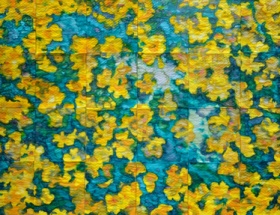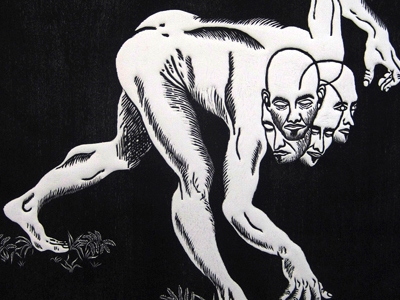Joking with the Bodies
By Ricardo Alberto Pérez
The mystery of vigor surrounds us, although normally we are not aware of its presence. Once discovered and beating in front of us, it becomes a catalyst of this existence that tends to get stuck in the repetitive and monotonous. For an artist, to discover or simply to sense this phenomenon represents finding the energy that ensures the credibility of his work for the viewer. The photographs of Osiris Cisneros (Havana, 1985) are faithful to that vigor that enables him to transcend to the events.
Cisneros’s nudes do not pretend to be based only on the attributes and parameters frequently assumed by this type of photography. In him there is a sort of network or web capable of holding chronicles to introduce us to problems he assumes from a very renewed perspective and full of polemic content. These visual stories sometimes adopt a mysterious tone that almost insinuates a police investigation; other times, pure cynicism is reflected in the ability to resist the undeniable cruelty of our times. In them, the feminine body plays the leading role and is willing to detach itself from the classic restrictions imposed by social practices and their memory.
That body has to endure too many tensions, and this generates a process containing the practically infinite wealth of individuality. Osiris nourishes from that reality; said universe that is sometimes expanding, others contracting, enables him to appropriate all kinds of textures and turn them into places where it is possible to recreate and gain access to ideas and concepts only born from such provocations. The objects and scenarios he opposes to that source of intensity usually represented by the beauty of his models have been very well chosen to create the dialogues eventually shared by the consumers with great complicity.
Many of these photos are made on austere settings, rustic locations, city corners in which sensuality inserts itself with a more brutal and suggestive tone. The view against the light, the shadow, and the absence of color are distinctive features of his work. With them he creates the adequate environments to stimulate the content he deposits in them and which will be interpreted as source of issues that may become very earnest. His manipulation of the light deserves to be highlighted because we know its magic touch can appear in a poem, a sonata, a film, or, as in this case, in a photograph.
Each snapshot gives a non-hegemonic vision. When frequently referring to that labyrinth called sexuality, he ranks both genders equally, producing a sensation of neutrality. An androgynous tone emerges from them, a surface deprived of power codes that allows a pleasurable enjoyment and a wide, though underground conspiracy.
The main figures are endowed with a moving visual quality that enables them to contaminate one another. Lips, nipples, muscles, buttocks; the sexual organ tentatively detonating from the darkness. They are sensible points or flight lines of a mixture that, when becoming consecutive begins to generate a creative face. His is a very distinctive way of establishing connections that are commonly frustrated by old pre-concepts or by the already known archetypical postures blocking the total freedom these instincts are bound to enjoy.
Osiris transforms objects of daily use such as the washing machine and the refrigerator (both very much connected to the history of women in the domestic environment) to convoke to sequences saturated with pleasure. These objects lose their stability when they become part of a dangerous dynamics; they are kidnapped by the constant transgression, and facing them the body continues to be a sort of chosen beast.
His work along this line started early in this decade in Havana and seems to have had a coherent continuation after settling in south Florida. The metaphorical element remains intact in his work and is rather increasing; this is largely due to his models and their inborn ability to understand through their bodies the ambitions of the artist.



